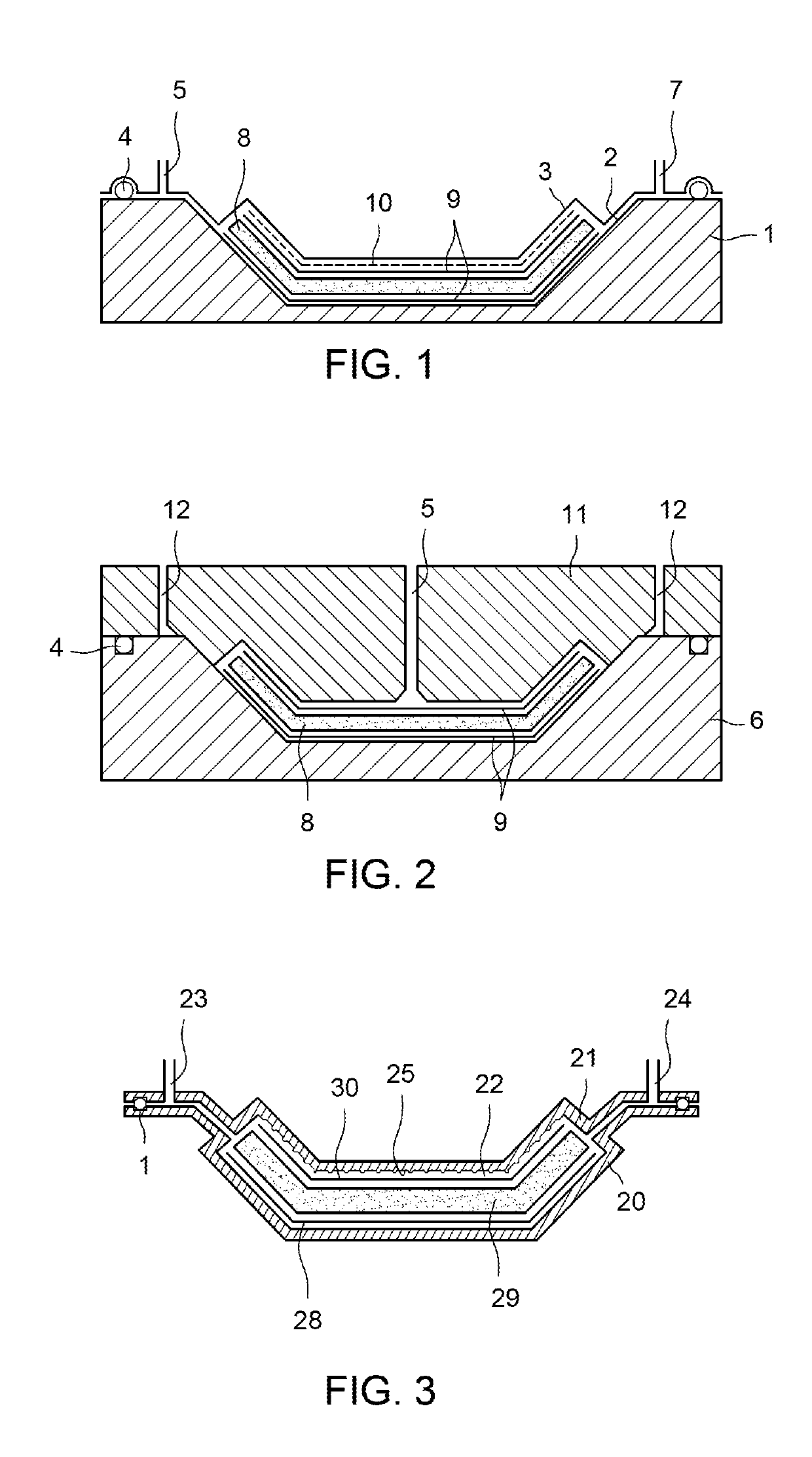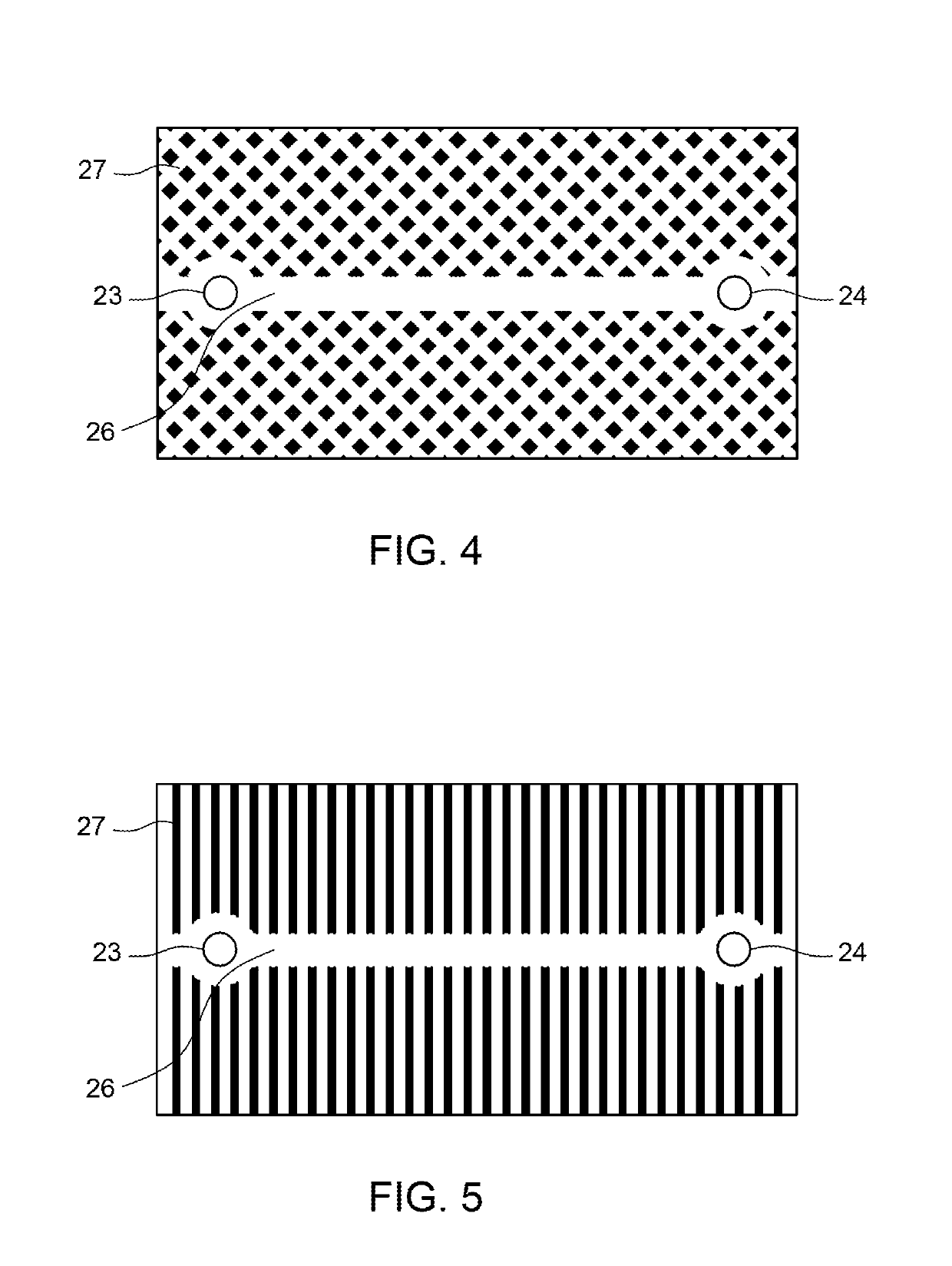Method of moulding a composite article and mould
a composite article and moulding technology, applied in the field of moulding a composite article and a mould, can solve the problems of large production volume, difficult to precisely define the opposite surface produced by the surface of the vacuum bag, and the relatively short cycle time, so as to reduce the surface and improve the quality of the surfa
- Summary
- Abstract
- Description
- Claims
- Application Information
AI Technical Summary
Benefits of technology
Problems solved by technology
Method used
Image
Examples
Embodiment Construction
[0021]FIG. 1 is a schematic depiction of a vacuum assisted resin transfer moulding (VARTM) process. There is a single rigid mould tool 1 which has a first surface 2 forming a high quality mould surface.
[0022]The opposite side of the mould is created by a vacuum bag 3 which is a flexible membrane that is drawn into the required position by application of a vacuum. Thus, the mould cavity is created between the mould surface 2 and the vacuum bag 3. The mould cavity is sealed by a seal 4 between the vacuum bag 3 and mould tool 1. Resin is supplied along a resin inlet 5 by a high pressure pump. A vacuum pump provides suction at vacuum outlet 7 to draw resin across from the opposite side of the mould cavity.
[0023]In use, fibres 8 and peel-ply layer 9 are first laid up in the mould. A distribution media layer 10 is then placed on the stack to aid the flow of resin. The vacuum bag 3 is put in place and a vacuum is applied. Resin is then drawn through the mould cavity by the vacuum pump to w...
PUM
| Property | Measurement | Unit |
|---|---|---|
| pressure drop | aaaaa | aaaaa |
| angle | aaaaa | aaaaa |
| angle | aaaaa | aaaaa |
Abstract
Description
Claims
Application Information
 Login to View More
Login to View More - R&D
- Intellectual Property
- Life Sciences
- Materials
- Tech Scout
- Unparalleled Data Quality
- Higher Quality Content
- 60% Fewer Hallucinations
Browse by: Latest US Patents, China's latest patents, Technical Efficacy Thesaurus, Application Domain, Technology Topic, Popular Technical Reports.
© 2025 PatSnap. All rights reserved.Legal|Privacy policy|Modern Slavery Act Transparency Statement|Sitemap|About US| Contact US: help@patsnap.com


